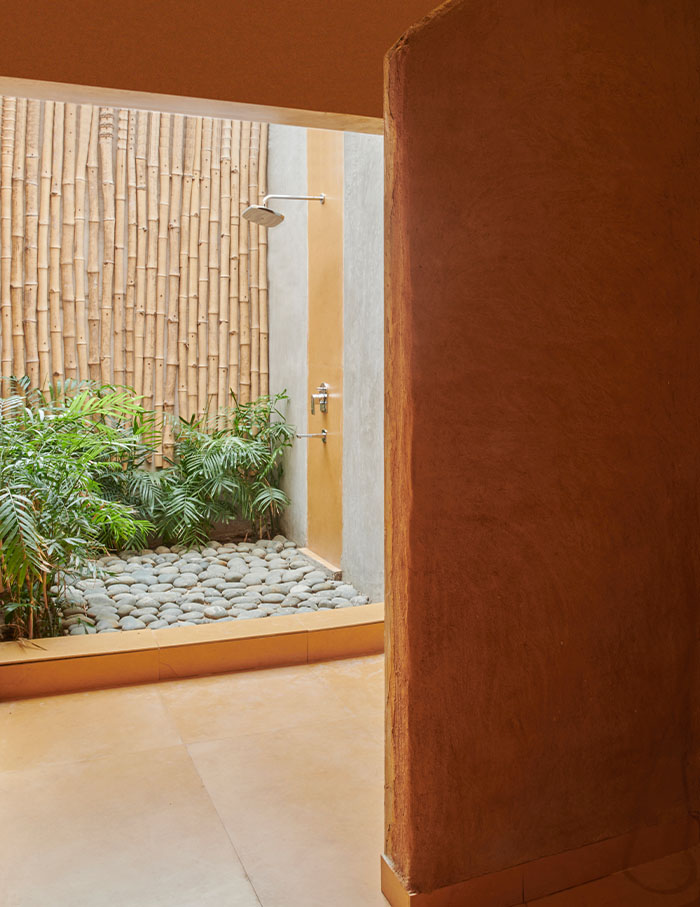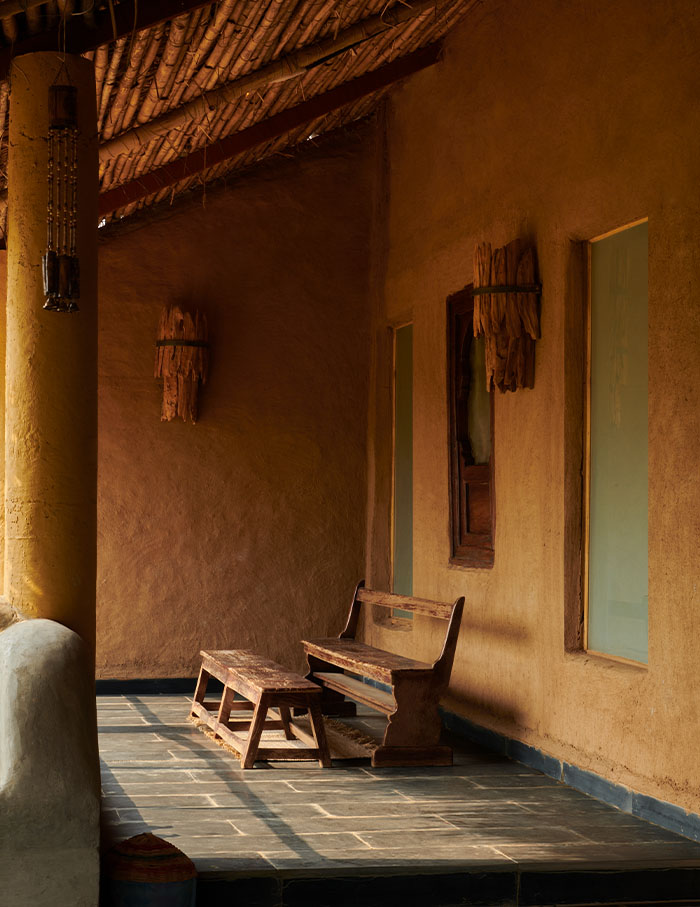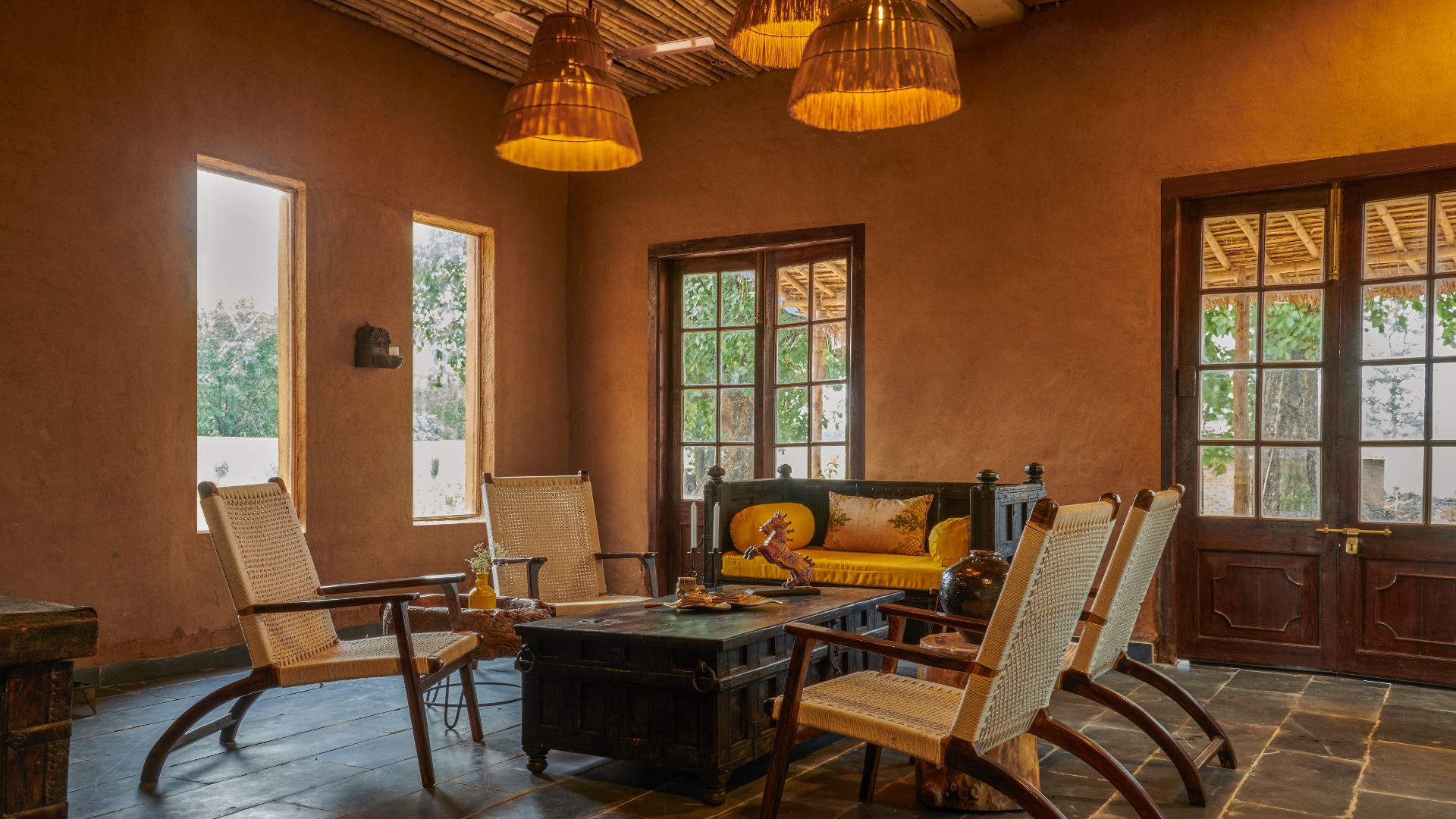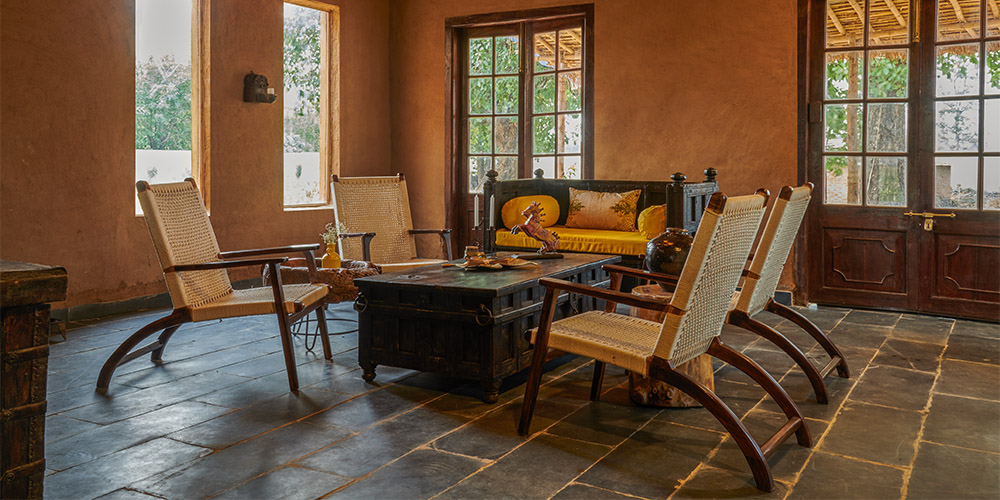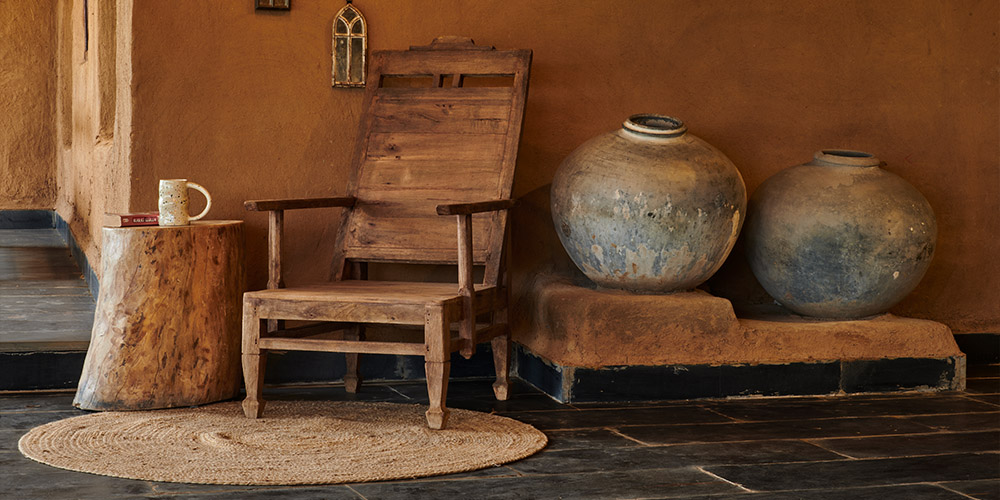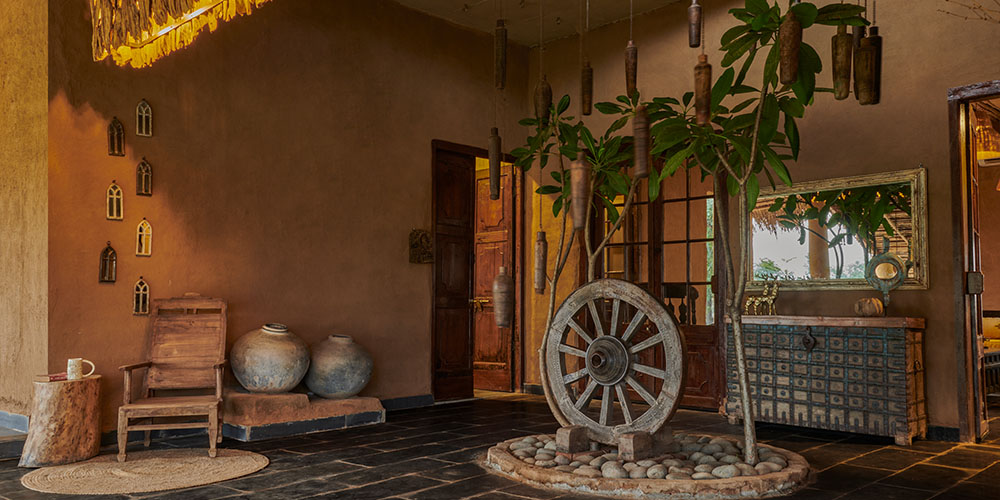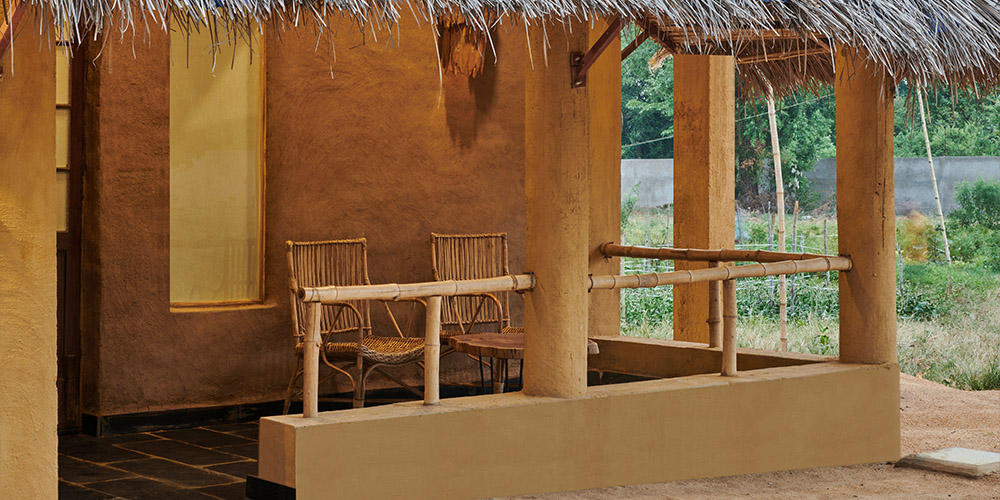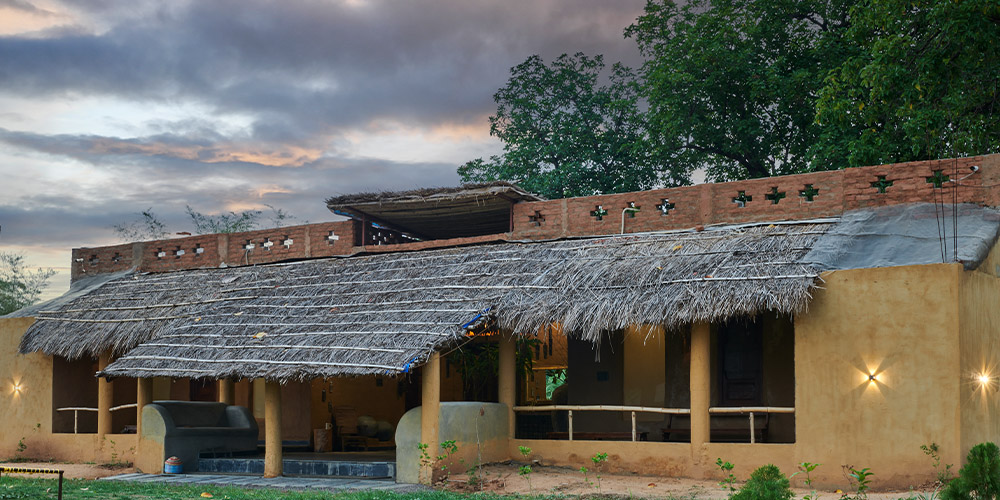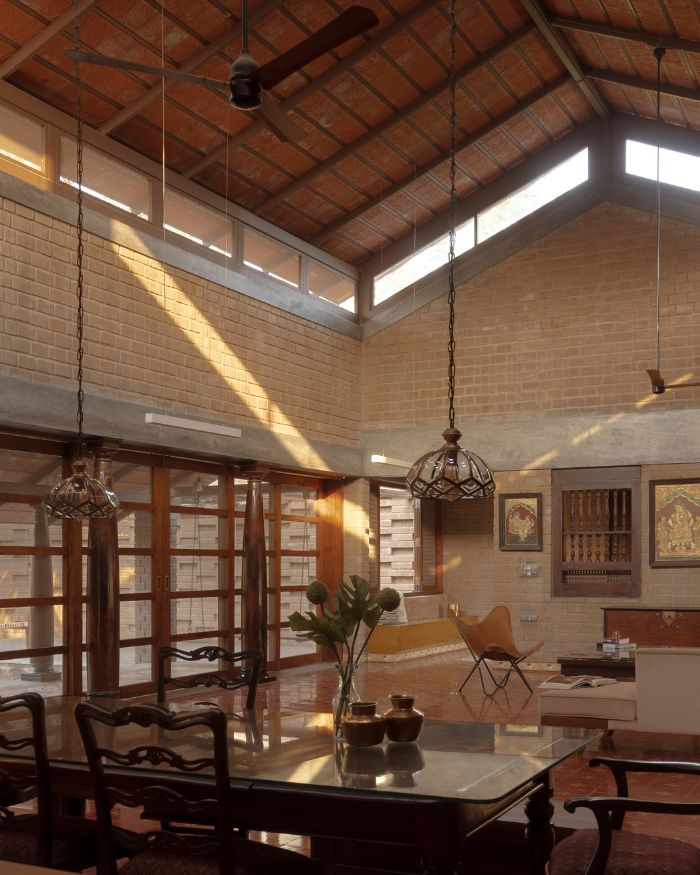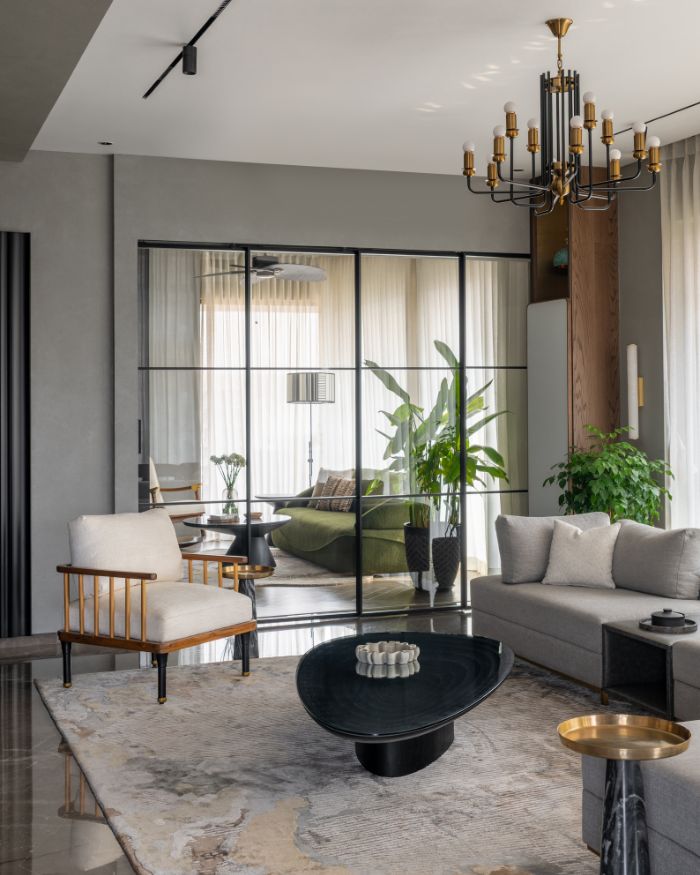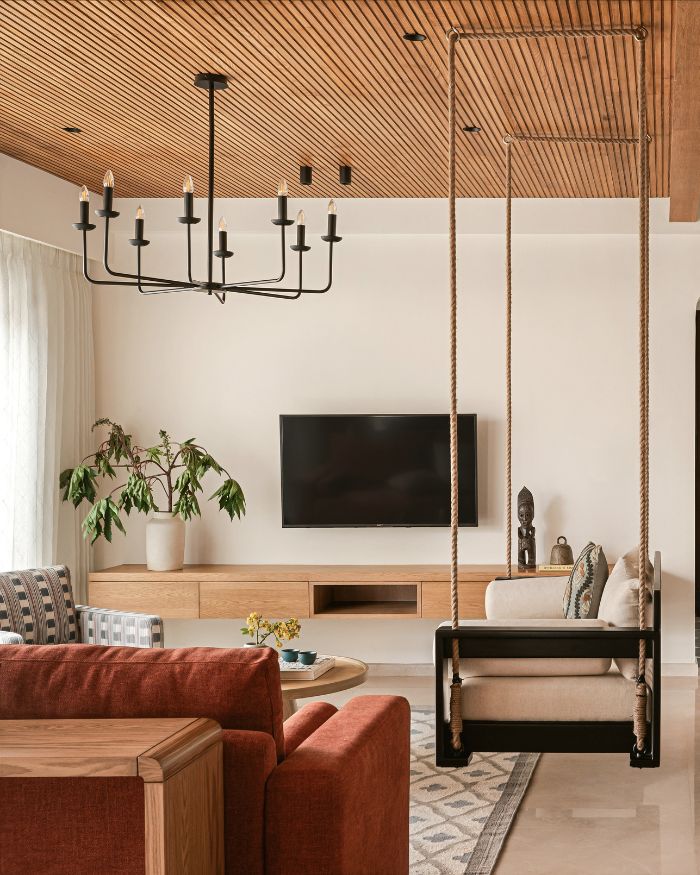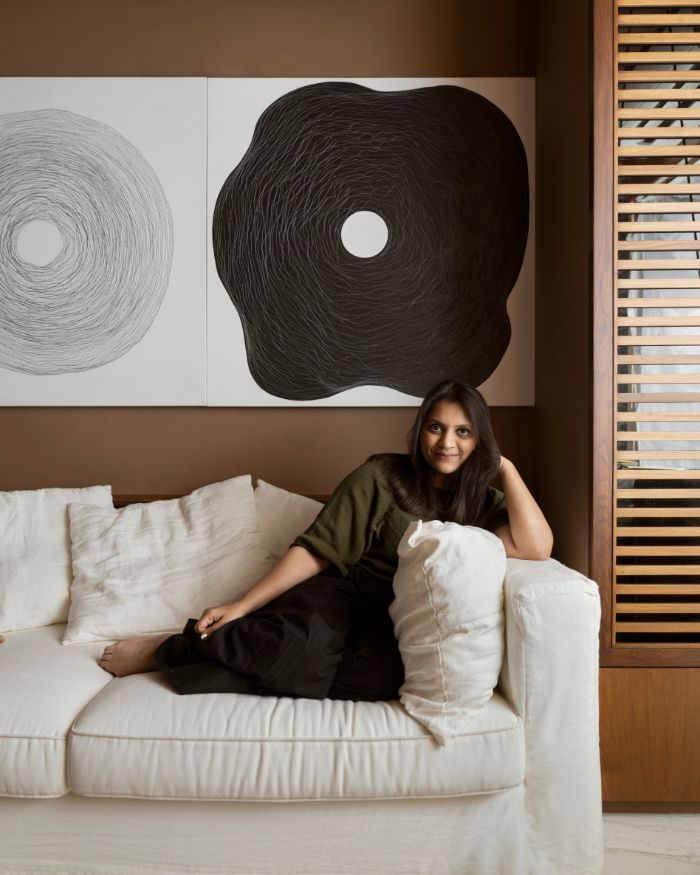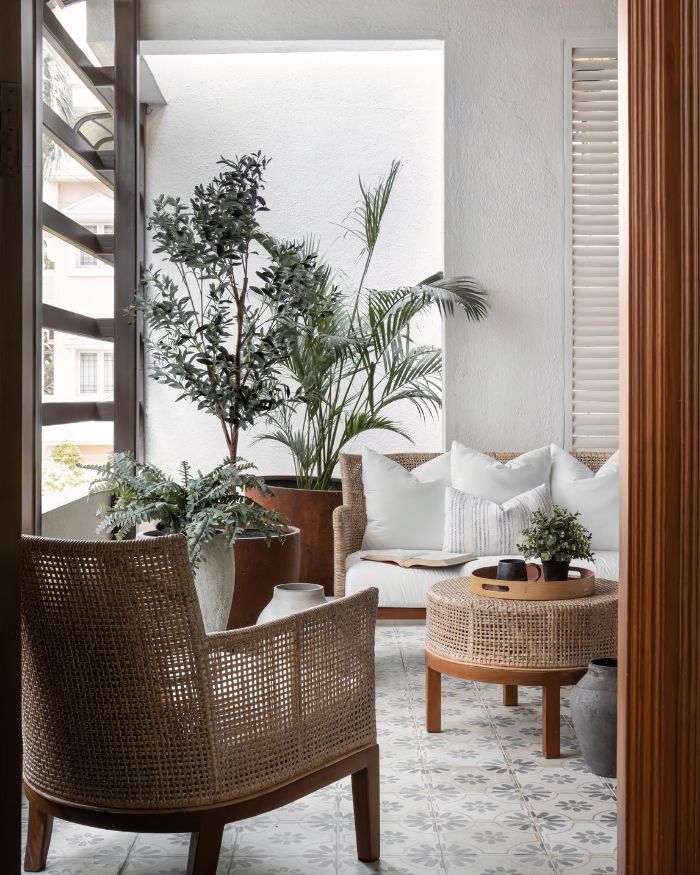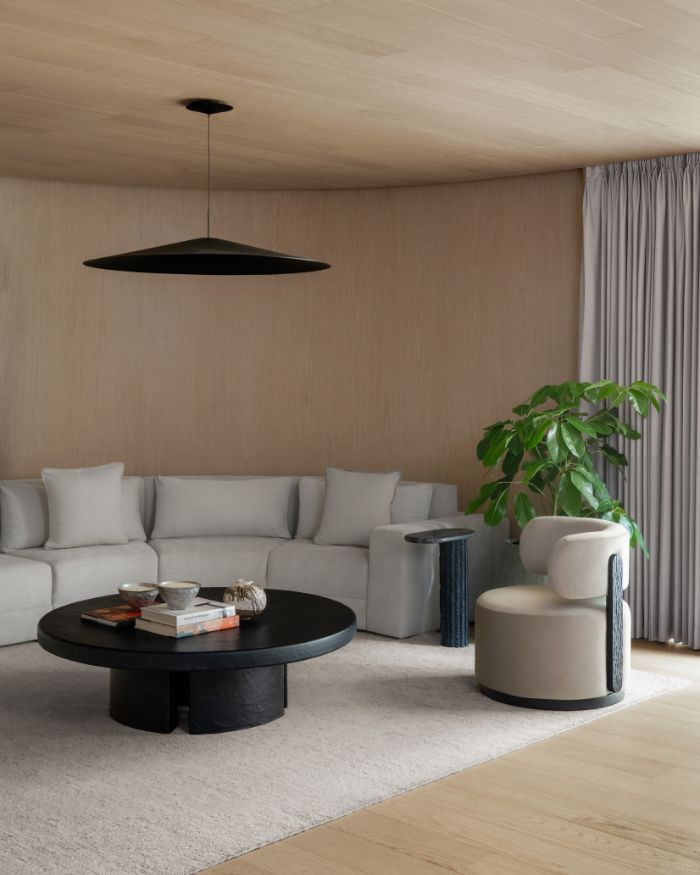Would you consider staying in a mud house? Before you allow your preconceptions to take over, take a moment to contemplate. No, you won’t be left without walls come monsoon or be transported into a Satyajit Ray feature film. In fact, mud houses today present a nouveau interpretation of the rustic luxe. Case in point: this earthy farmhouse in Raipur designed by Curious Hues.
A 100 kilometres from the city, the traditional getaway-like home is located in the wildlife sanctuary of Barnawapara. The 2,700 sq ft rustic built form blends into the landscape of 4.5 acres and strives to inspire a major cottage-core envy in us. Think a bullock cart wheel and a Champa tree inside underneath a rustic skylight.

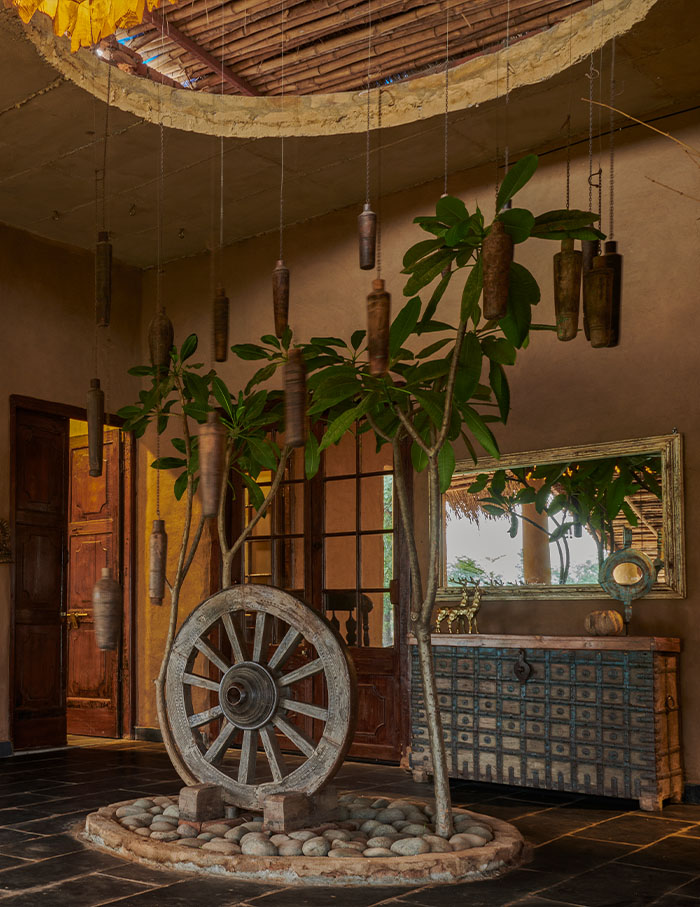
Inside the earth-cave
However, unlike the fleeting cottagecore trend that has cropped up on the Internet, this mud house draws its inspiration from the traditional dwellings of the subcontinent instead. The material palette includes mud-plastered walls, bamboo and slate flooring accented with reclaimed wood hanging light.
“Nestled in the cosy corner of the foyer is the space where time seems to slow down,” muse the designers Swanit and Rinku Passary. And if you feel the need to slow down yourself, a recycled teak wood bench and a table, are perfectly placed to rest your teacup on a chilly winter evening and catch up on your reading. Inside, the living room hosts woven furniture that complement the bamboo rafter ceiling. A play of shadows against the bare earthen walls brings the space alive. While simplicity reigns supreme in the architectural envelope, the furniture of the bedroom and the light fixtures lean towards an ornate intricacy.
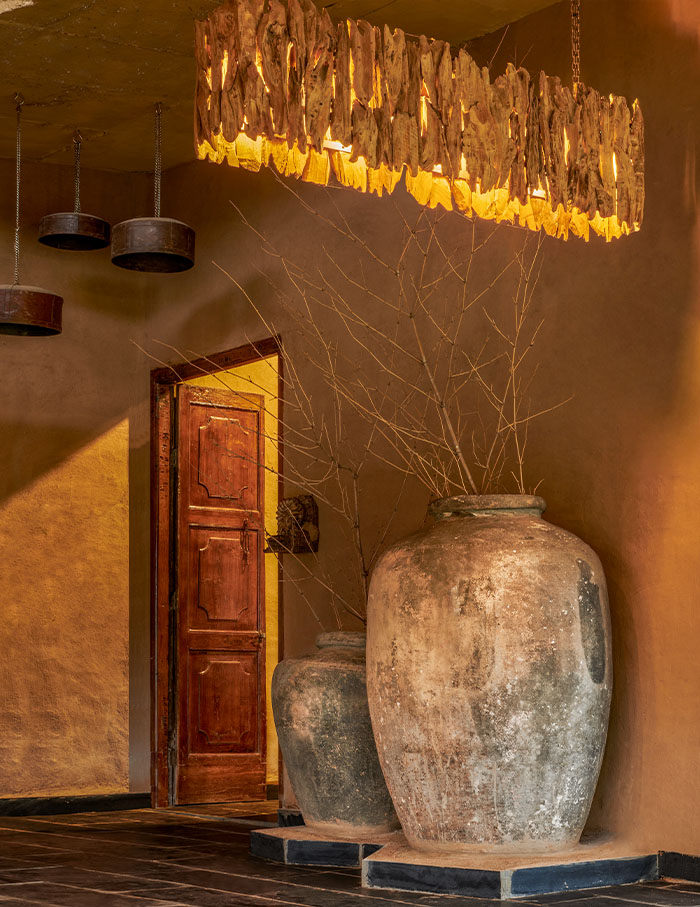
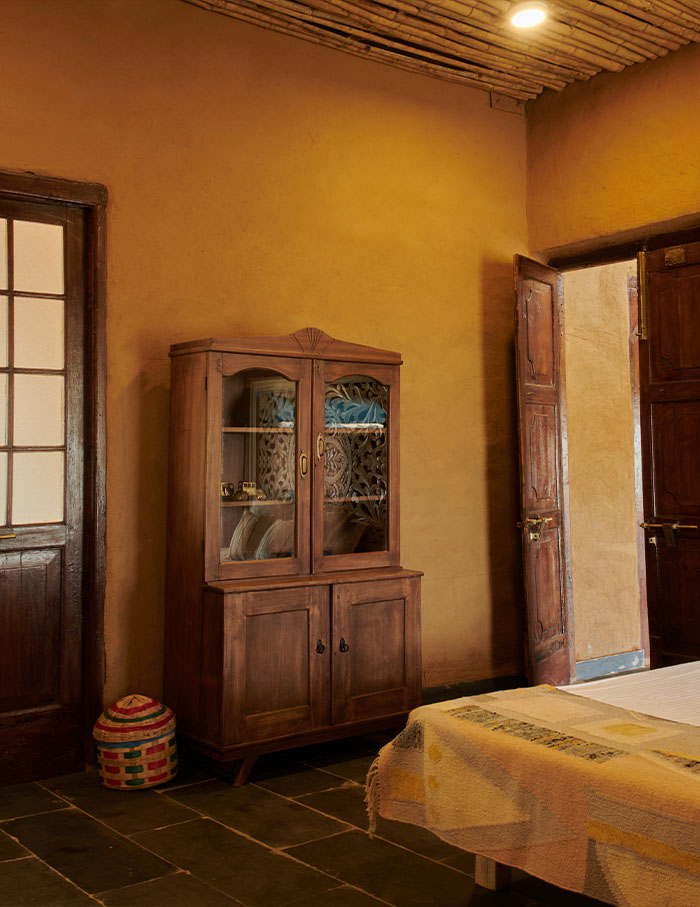
Curious materiality
According to the designers, “old is the new new.” The walls were clad with mud, dry hay and sand or with dry split bamboo, replacing the ordinary paint and plaster that most of us are familiar with. There is little in this earthy farmhouse by Curious Hues that adheres to our conception of “normal.” However, the challenges that arise with an offbeat home are also, unsurprisingly, unusual.
But the designers of this mud house had two perplexing sourcing conundrums — the 12 ft darwaza and the selection of grass for the thatched roof. “The designer found the tall grass near a lake which was then cut, dried and tied together to put above the sloping roof,” confesses Swanit and Rinku. And as for the darwaza, it was repurposed from an old haveli.
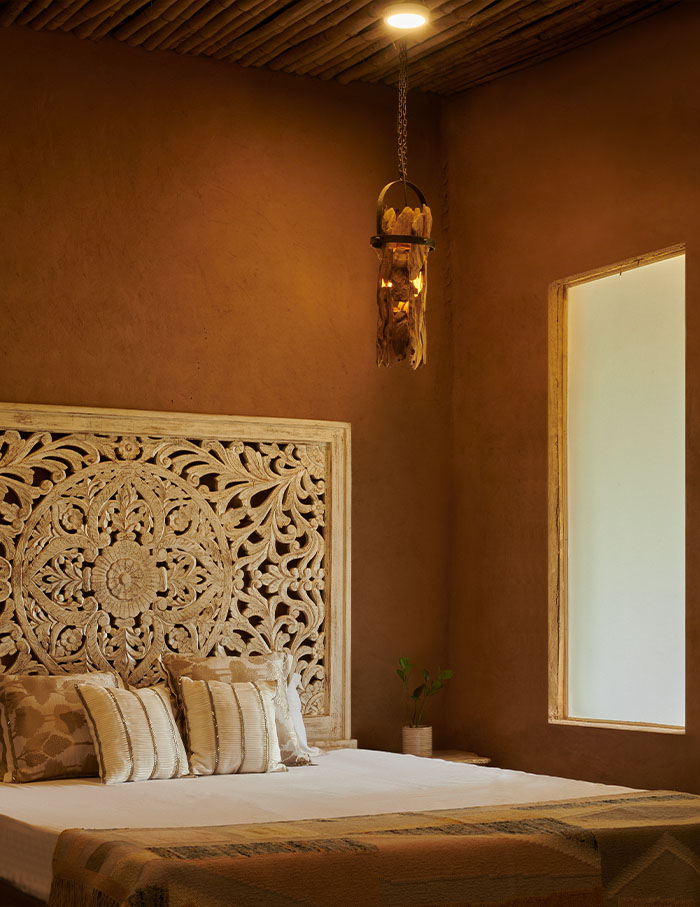
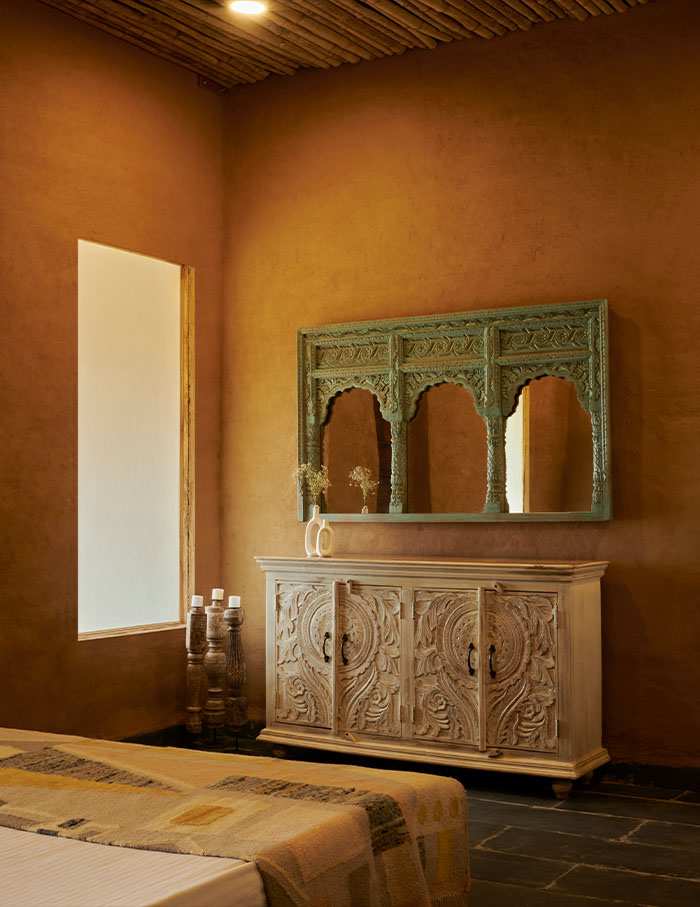
Earth homes for the future
So why not design more mud houses? “Mud architecture has to be maintained with a touchup of the mud mix every year,” Swanit and Rinku explain. Maintenance is a critical affair when it comes to building with alternative materials. The awareness runs low and prejudices are aplenty.
However, in a world of white boxes and polished luxury, if the humble mud house have to come out on the other side as victors, it is our perception that has to change. Designers like Curious Hues are taking a step forward in this direction. Wabi-sabi, rustic, cottagecore — as we embrace the trends of today, the question arises can sustainability now be a desirable design trait?
